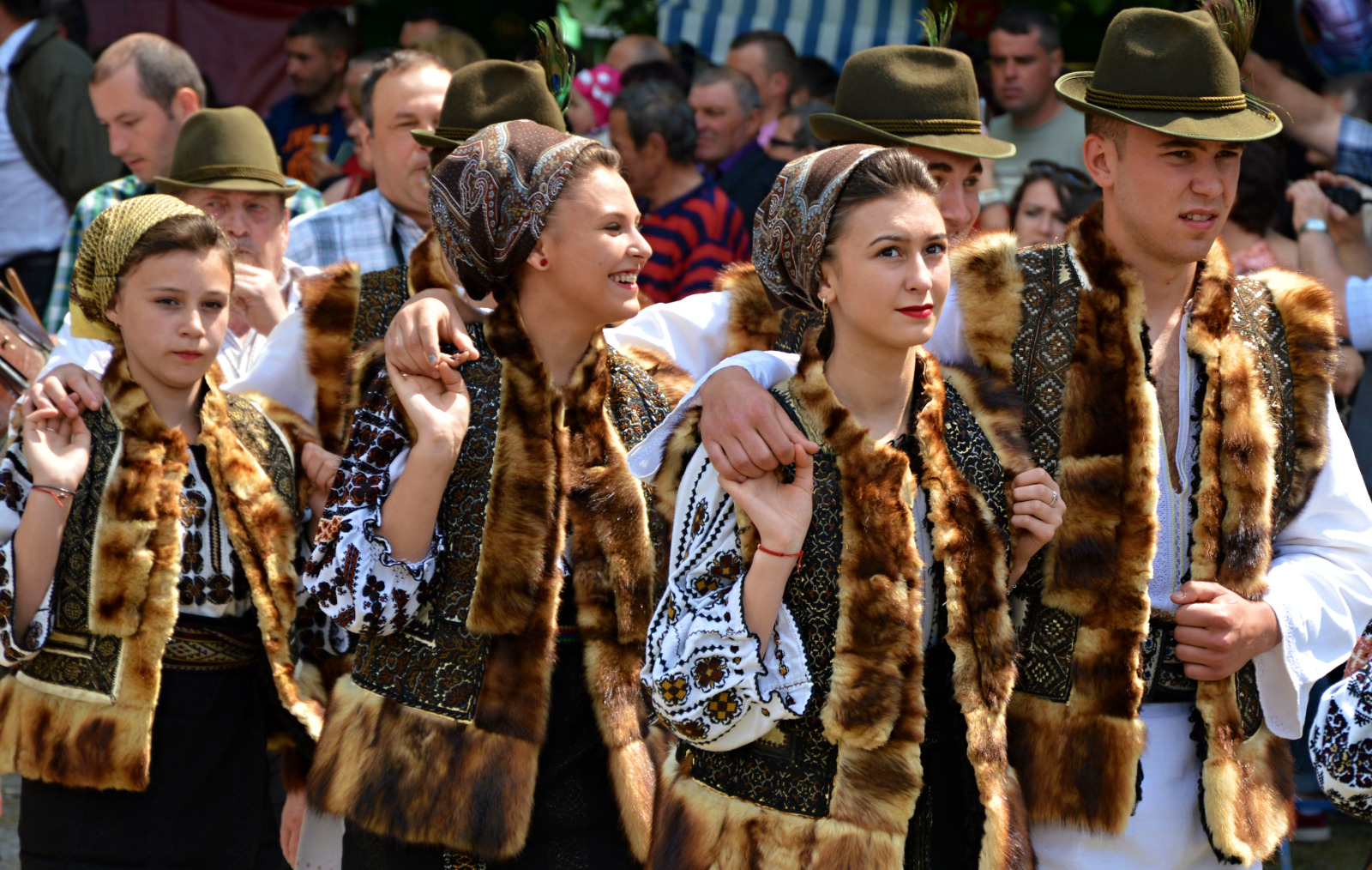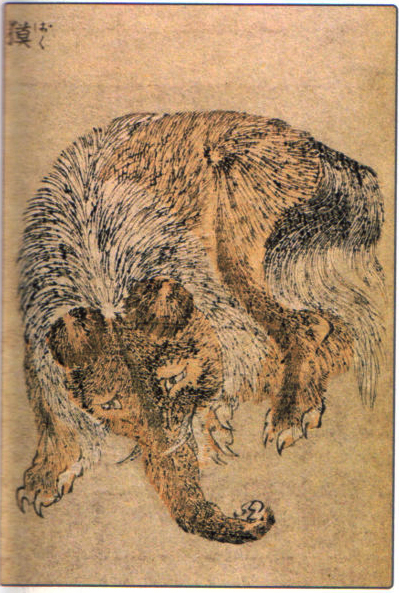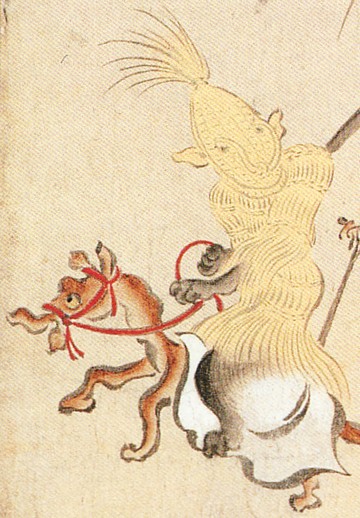|
List Of Legendary Creatures (B)
* Ba ( Egyptian) – Soul of the deceased, depicted as a bird or a human-headed bird * Baba Yaga ( Slavic) – Forest spirit and hag * Baccoo ( Guyanese/ Surinamese) – Malevolent little people * Badalisc (Italian) – Goat-like creature from the southern central Alps * Bagiennik ( Slavic) – Malevolent water spirit * Bahamut (Arabian) – Giant fish * Bai Ze ( Chinese) – Talking beast which handed down knowledge on harmful spirits * Ba Jiao Gui ( Chinese) – Banana tree spirit * Bak (Indian) – Assamese shape-shifting aqueous creature * Bake-kujira ( Japanese) – Ghostly whale skeleton that drifts along the coastline of Shimane Prefecture * Bakeneko ( Japanese) – Magical cat * Bakezōri ( Japanese) – Animated straw sandal * Bakhtak (Iranian) – Night demon named Shaina * Baku ( Japanese) – Dream-devouring, tapir-like creature * Bakunawa (Philippine) – Sea serpent that causes eclipses * Balaur (Romanian) – Multi-headed dragon * Baloz ( Albanian) – Se ... [...More Info...] [...Related Items...] OR: [Wikipedia] [Google] [Baidu] |
Chinese Ghosts
Chinese folklore features a rich variety of ghosts, monsters, and other supernatural creatures. According to traditional beliefs a ghost is the spirit form of a person who has died. Ghosts are typically malevolent and will cause harm to the living if provoked. Many Chinese folk beliefs about ghosts have been adopted into the mythologies and folklore of neighboring East Asian cultures, notably Japan, Korea, and Vietnam. Beliefs about ghosts are closely associated with Chinese ancestor worship, where much have been incorporated into Buddhism and in turn influenced and created uniquely Chinese Buddhist beliefs about the supernatural. Traditionally, the Chinese believed that it was possible to contact the spirits of deceased relatives and ancestors through a medium. It was believed that the spirits of the deceased can help them if they were properly respected and rewarded. The annual Hungry Ghost Festival, celebrated in China (including Hong Kong and Macao Special Administrative Re ... [...More Info...] [...Related Items...] OR: [Wikipedia] [Google] [Baidu] |
Romanian Folklore
The folklore of Romania is the collection of traditions of the Romanians. A feature of Romanian culture is the special relationship between folklore and the learned culture, determined by two factors. First, the rural character of the Romanian communities resulted in an exceptionally vital and creative traditional culture. Folk creations (the best known is the ballad Miorița) were the main literary genre until the 18th century. They were both a source of inspiration for cultivated creators and a structural model. Second, for a long time learned culture was governed by official and social commands and developed around courts of princes and boyars, as well as in monasteries. Overview Creation of the world Stories suggest God made the earth with the help of animals, while the Devil was trying to thwart his plans.Cosma, Aurel. ''Cosmogonia poporului român'' (The Cosmogony of the Romanian People) (1942). Bucharest: Tipografia Ziarului "Universul".Leeming, David Adams. ''Creatio ... [...More Info...] [...Related Items...] OR: [Wikipedia] [Google] [Baidu] |
Balaur
A balaur ( pl. ''balauri'') in Romanian folklore is a type of many-headed dragon or monstrous serpent, sometimes said to be equipped with wings. The number of heads is usually around three, but they can also have seven heads or even twelve heads according to some legends. The balaur in folktale is typically evil, demanding or abducting young maidens or the princess, and defeated by the hero such as Saint George or the fair youth Făt-Frumos. There is some lore in which the balaur is considered weather-making, and living in an airborne state, but these types of balaur are sometimes interchangeably called ''hala'' or ''ala'', being confounded with the pan-Slavic air and water demon. The balaur (instead of the zmeu) is the vehicle of the weather-controlling Solomonari according to some sources. There are also legends about the balaur in which they can produce precious stones from their saliva. Also, it is said that whoever manages to slay it will be forgiven a sin. General ... [...More Info...] [...Related Items...] OR: [Wikipedia] [Google] [Baidu] |
Philippine Mythology
Philippine mythology is the body of stories and epics originating from, and part of, the indigenous Philippine folk religions, which include various ethnic faiths distinct from one another. Philippine mythology is incorporated from various sources, having similarities with Indonesian and Malay myths, as well as Hindu, Muslim, Shinto, Buddhist, and Christian traditions, such as the notion of heaven ('' kaluwalhatian'', ''kalangitan'', ''kamurawayan'', etc.), hell (''kasamaan'', ''sulad'', etc.), and the human soul (''kaluluwa'', ''kaulolan'', ''makatu'', ''ginokud'', etc.). Philippine mythology attempts to explain the nature of the world through the lives and actions of heroes, deities (referred to as anito or diwata in some ethnic groups), and mythological creatures. The majority of these myths were passed on through oral tradition, and preserved through the aid of community spiritual leaders or shamans (''babaylan'', ''katalonan'', ''mumbaki'', ''baglan'', ''machanitu'' ... [...More Info...] [...Related Items...] OR: [Wikipedia] [Google] [Baidu] |
Bakunawa
The Bakunawa is a serpent-like dragon in Philippine mythology. It is believed to be the cause of eclipses, earthquakes, rains, and wind. The movements of the Bakunawa served as a geomantic calendar system for ancient Filipinos and were part of the shamanistic rituals of the ''babaylan''. It is usually depicted with a characteristic looped tail and a single horn on the nose. It was generally believed to be a sea serpent, but are also variously believed to inhabit either the sky or the underworld. Due to increasing trade contacts with South Asia and the Indianization of Southeast Asia, the Bakunawa later became syncretized with the Nāga, Rahu, and Ketu of Hindu-Buddhist mythology. Etymology Bakunawa is believed to be originally a compound word meaning "bent snake", from Proto-Western-Malayo-Polynesian ''*ba(ŋ)kuq'' ("bent", "curved") and ''*sawa'' ("large snake", "python"). Spelling variants include Vakonawa, Baconaua, or Bakonaua. Historical accounts "No. 42. When the moon ... [...More Info...] [...Related Items...] OR: [Wikipedia] [Google] [Baidu] |
Baku (spirit)
are Japanese supernatural beings that are said to devour nightmares. According to legend, they were created by the spare pieces that were left over when the gods finished creating all other animals. They have a long history in Japanese folklore and art, and more recently have appeared in manga and anime. The Japanese term ''baku'' has two current meanings, referring to both the traditional dream-devouring creature and to the Malayan tapir. In recent years, there have been changes in how the ''baku'' is depicted. History and description The traditional Japanese nightmare-devouring ''baku'' originates in Chinese folklore about the '' mo'' 貘 ( giant panda) and was familiar in Japan as early as the Muromachi period (14th–15th century). Hori Tadao has described the dream-eating abilities attributed to the traditional ''baku'' and relates them to other preventatives against nightmare such as amulets. Kaii-Yōkai Denshō Database, citing a 1957 paper, and Mizuki also describe t ... [...More Info...] [...Related Items...] OR: [Wikipedia] [Google] [Baidu] |
Iranian Folklore
Iranian folklore encompasses the folk traditions that have evolved in Greater Iran. Oral legends Folktales Storytelling has an important presence in Iranian culture. In classical Iran, minstrels performed for their audiences at royal courts and in public theaters. A minstrel was referred to by the Parthians as in Parthian, and by the Sasanians as in Middle Persian. Since the time of the Safavid dynasty, storytellers and poetry readers appeared at coffeehouses. The following are a number of folktales known to the people of Iran. * ("Rolling Pumpkin") * ("Moon-brow") * ("Bitter Orange and Bergamot Orange") * ("Old Woman's Cold"), a period in the month of Esfand, at the end of winter, during which an old woman's flock is not impregnated. She goes to Moses and asks for an extension of the cold winter days, so that her flock might copulate. * ("Shangul and Mangul") * ("Auntie Cockroach") Below are a number of historical tale books that contain Iranian folktales. * ("A ... [...More Info...] [...Related Items...] OR: [Wikipedia] [Google] [Baidu] |
Bakezōri
A is a fictitious being from Japanese folklore belonging to the group of Yōkai. Description The Bakezōri is described as a wandering sandal with two arms and two legs, but only one eye. He is said to spook inhabited households during the night, running around and continuously chanting: "Kararin, kororin, kankororin, managu mittsu ni ha ninmai!" (; "Kararin, kororin, kankororin! They have three eyes and two teeth!"). Most possibly he's mocking his "more noble cousins", the famous Geta.Masaharu Takemura: . Bungei-sha, Tokyo 2002, , p. 89-91.Michaela Haustein: ''Mythologien der Welt: Japan, Ainu, Korea''. ePubli, Berlin 2011, , p. 9. Background Design model of the Bakezōri may have been ''Zōri'', traditional sandals made of braided rice straw. The being ''Bakezōri'' belongs to a special group of Yōkai, called ''Tsukumogami In Japanese folklore, ''tsukumogami'' (付喪神 or つくも神, lit. "tool ''kami''") are tools that have acquired a kami or spirit. According t ... [...More Info...] [...Related Items...] OR: [Wikipedia] [Google] [Baidu] |
Bakeneko
The (, "changed cat") is a type of Japanese , or supernatural entity; more specifically, it is a , or supernatural cat. It is often confused with the , another cat-like . The distinction between them is often ambiguous, but the largest difference is that the has two tails, while the has only one. There are legends of in various parts of Japan, but the tale of the Nabeshima Disturbance in Saga Prefecture is especially famous. Origin The reason that cats are seen as in Japanese mythology is attributed to many of their characteristics: for example, the irises of their eyes change shape depending on the time of day, their fur can seem to cause sparks when they are petted (due to static electricity), they sometimes lick blood, they can walk without making a sound, their wild nature that remains despite the gentleness they can show, they are difficult to control (unlike dogs), their sharp claws and teeth, nocturnal habits, and their speed and agility.1994、125–127。2005、156� ... [...More Info...] [...Related Items...] OR: [Wikipedia] [Google] [Baidu] |
Shimane Prefecture
is a prefecture of Japan located in the Chūgoku region of Honshu. Shimane Prefecture is the second-least populous prefecture of Japan at 665,205 (February 1, 2021) and has a geographic area of 6,708.26 km2. Shimane Prefecture borders Yamaguchi Prefecture to the southwest, Hiroshima Prefecture to the south, and Tottori Prefecture to the east. Matsue is the capital and largest city of Shimane Prefecture, with other major cities including Izumo, Hamada, and Masuda. Shimane Prefecture contains the majority of the Lake Shinji- Nakaumi metropolitan area centered on Matsue, and with a population of approximately 600,000 is Japan's third-largest metropolitan area on the Sea of Japan coast after Niigata and Greater Kanazawa. Shimane Prefecture is bounded by the Sea of Japan coastline on the north, where two-thirds of the population live, and the Chūgoku Mountains on the south. Shimane Prefecture governs the Oki Islands in the Sea of Japan which juridically includes the dispu ... [...More Info...] [...Related Items...] OR: [Wikipedia] [Google] [Baidu] |
Japanese Mythology
Japanese mythology is a collection of traditional stories, folktales, and beliefs that emerged in the islands of the Japanese archipelago. Shinto and Buddhist traditions are the cornerstones of Japanese mythology. The history of thousands of years of contact with Korea, Ainu, and Okinawan myths are also key influences in Japanese mythology. Japanese myths are tied to the topography of the archipelago as well as agriculturally-based folk religion, and the Shinto pantheon holds countless '' kami'' ( Japanese for " god(s)" or "spirits"). This article will discuss cosmogony, important deities, modern interpretations, cultural significance, and the influence of these myths. Two important sources for Japanese myths as they are recognized today are the '' Kojiki'' and the '' Nihon Shoki''. The ''Kojiki'', or "Record of Ancient Matters," is the oldest surviving account of Japan's myths, legends, and history. Additionally, the ''Shintōshū'' describes the origins of Japanese de ... [...More Info...] [...Related Items...] OR: [Wikipedia] [Google] [Baidu] |








